The Adventures of Tom Sawyer (published 1876) is a very well-known and popular story concerning American youth. Mark Twain's lively tale of the scrapes and adventures of boyhood is set in St. Petersburg, Missouri, where Tom Sawyer and his friend Huckleberry Finn have the kinds of adventures many boys can imagine: racing bugs during class, impressing girls, with fights and stunts in the schoolyard, getting lost in a cave, and playing pirates on the Mississippi river.
Free iPod Classic Audio Books
To help you to find the best iPod audio books, Pavtube has conllected some free classic audio books for your iPod, Saying that an excellent way to educate yourself and spice up an otherwise boring workout is listening to iPod audio books and podcasts while you hit the gym. It also works great for beating the boredom while you're stuck in traffic during your daily commute. The following is some wonderful classic audio books.
The Adventures of Tom Sawyer
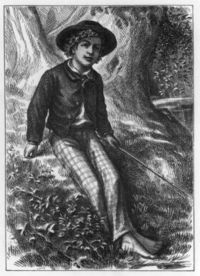
Huckleberry Finn
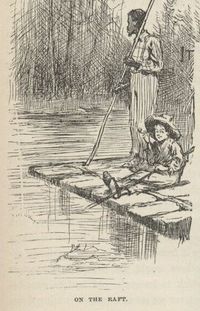 The Adventures of Huckleberry Finn (1884) by Mark Twain is one of the truly great American novels, beloved by children, adults, and literary critics alike. The book tells the story of Huck Finn (first introduced as Tom Sawyer's sidekick in The Adventures of Tom Sawyer), his friend Jim, and their journey down the Mississippi River on a raft. Both are on the run, Huck from his drunk and abusive father, and Jim as a runaway slave.
The Adventures of Huckleberry Finn (1884) by Mark Twain is one of the truly great American novels, beloved by children, adults, and literary critics alike. The book tells the story of Huck Finn (first introduced as Tom Sawyer's sidekick in The Adventures of Tom Sawyer), his friend Jim, and their journey down the Mississippi River on a raft. Both are on the run, Huck from his drunk and abusive father, and Jim as a runaway slave.Pilgrim's Progress
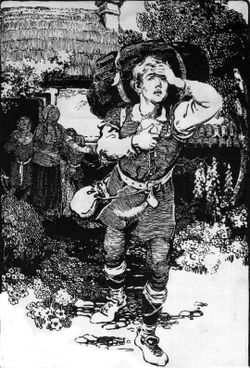 Translated into over 100 languages, The Pilgrim's Progress is one of the most famous classics of literature. It is an allegorical novel, describing a Christian's journey through life to reach heaven. Part 1 was written by John Bunyan in 1679 whilst he was imprisoned for conducting unauthorized religious services, whilst Part 2 was not written until 1684, and is not included in many versions of this text. This recording includes both parts, and inline scripture references.
Translated into over 100 languages, The Pilgrim's Progress is one of the most famous classics of literature. It is an allegorical novel, describing a Christian's journey through life to reach heaven. Part 1 was written by John Bunyan in 1679 whilst he was imprisoned for conducting unauthorized religious services, whilst Part 2 was not written until 1684, and is not included in many versions of this text. This recording includes both parts, and inline scripture references.Treasure Island
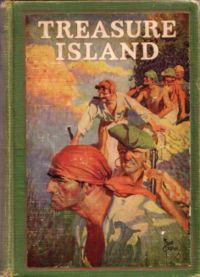 Treasure Island is an adventure novel, a thrilling tale of buccaneers and buried gold. Traditionally considered a coming of age story, it is an adventure tale of superb atmosphere, character and action, and also a wry commentary on the ambiguity of morality - as seen in Long John Silver - unusual for children's literature then and now.
Treasure Island is an adventure novel, a thrilling tale of buccaneers and buried gold. Traditionally considered a coming of age story, it is an adventure tale of superb atmosphere, character and action, and also a wry commentary on the ambiguity of morality - as seen in Long John Silver - unusual for children's literature then and now.Alice's Adventures in Wonderland
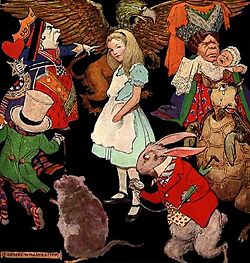 Alice's Adventures in Wonderland is a work of children's literature by the English mathematician and author, Reverend Charles Lutwidge Dodgson, written under the pseudonym Lewis Carroll. It tells the story of a girl named Alice who falls down a rabbit-hole into a fantasy realm populated by talking playing cards and anthropomorphic creatures. The tale is fraught with satirical allusions to Dodgson's friends and to the lessons that British schoolchildren were expected to memorize. The Wonderland described in the tale plays with logic in ways that has made the story of lasting popularity with children as well as adults.
Alice's Adventures in Wonderland is a work of children's literature by the English mathematician and author, Reverend Charles Lutwidge Dodgson, written under the pseudonym Lewis Carroll. It tells the story of a girl named Alice who falls down a rabbit-hole into a fantasy realm populated by talking playing cards and anthropomorphic creatures. The tale is fraught with satirical allusions to Dodgson's friends and to the lessons that British schoolchildren were expected to memorize. The Wonderland described in the tale plays with logic in ways that has made the story of lasting popularity with children as well as adults.Autobiography of Frederick Douglas
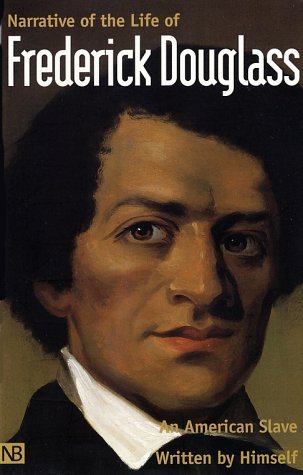 Frederick Douglass 1818?-1895 was an American abolitionist, editor, orator, author, statesman and reformer. Called "The Sage of Anacostia", Douglass was among the most prominent African-Americans of his time, and one of the most influential lecturers and authors in American history. His most well-known work is his autobiography, Narrative of the Life of Frederick Douglass, an American Slave, which was published in 1845. Critics frequently attacked the book as inauthentic, not believing that a black man could possibly have produced so eloquent a piece of literature. The book was an immediate bestseller and received overwhelmingly positive critical reviews.
Frederick Douglass 1818?-1895 was an American abolitionist, editor, orator, author, statesman and reformer. Called "The Sage of Anacostia", Douglass was among the most prominent African-Americans of his time, and one of the most influential lecturers and authors in American history. His most well-known work is his autobiography, Narrative of the Life of Frederick Douglass, an American Slave, which was published in 1845. Critics frequently attacked the book as inauthentic, not believing that a black man could possibly have produced so eloquent a piece of literature. The book was an immediate bestseller and received overwhelmingly positive critical reviews.
Ten Days in a Madhouse
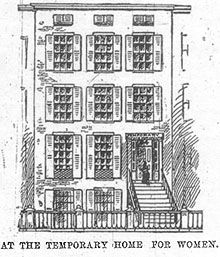 In 1887 Nellie Bly, one of the first female newspaper writers, and a young reporter who would soon go on to make a career for herself as an investigative journalist and stunt reporter, had herself committed to the Blackwell's Island Insane Asylum in New York. Her purpose was to discover what life was like for those who had been deemed insane. She was surprised to discover the depth of mistreatment of the patients. Partially as a result of her reporting, more money was allocated to the asylum and reforms were put into place.
In 1887 Nellie Bly, one of the first female newspaper writers, and a young reporter who would soon go on to make a career for herself as an investigative journalist and stunt reporter, had herself committed to the Blackwell's Island Insane Asylum in New York. Her purpose was to discover what life was like for those who had been deemed insane. She was surprised to discover the depth of mistreatment of the patients. Partially as a result of her reporting, more money was allocated to the asylum and reforms were put into place.White Fang
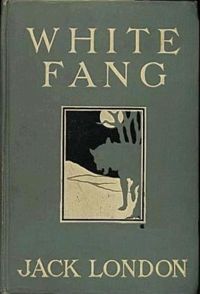 White Fang (1906) was a sequel to the popular Call of the Wild (1903). It is the story of a dog born in the wild and brought to civilization. The story is viewed primarily through the eyes of its canine protagonist and deals with themes of morality and redemption.
White Fang (1906) was a sequel to the popular Call of the Wild (1903). It is the story of a dog born in the wild and brought to civilization. The story is viewed primarily through the eyes of its canine protagonist and deals with themes of morality and redemption.
The Four Million
 The Four Million is the second book written by O. Henry while he served time for embezzlement in a penitentiary in Ohio. The book is a series of short stories which take place in New York City in the early years of the 20th century and are representative of the surprise endings that popularized O. Henry's work. They also capture his use of coincidence or chance to create humor in the story. O Henry wrote about ordinary people in everyday circumstances. He is quoted as once saying, "There are stories in everything. I've got some of my best yarns from park benches, lampposts and newspaper stands."
The Four Million is the second book written by O. Henry while he served time for embezzlement in a penitentiary in Ohio. The book is a series of short stories which take place in New York City in the early years of the 20th century and are representative of the surprise endings that popularized O. Henry's work. They also capture his use of coincidence or chance to create humor in the story. O Henry wrote about ordinary people in everyday circumstances. He is quoted as once saying, "There are stories in everything. I've got some of my best yarns from park benches, lampposts and newspaper stands."Legend of Sleepy Hollow
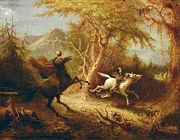 "The Legend of Sleepy Hollow" is a short story by Washington Irving contained in his collection The Sketch Book of Geoffrey Crayon, Gent, and first published in 1819. The story is set in the Dutch settlement of Tarry Town near a sequestered glen called Sleepy Hollow, around the year 1787. It tells the story of Ichabod Crane, a priggish schoolmaster from Connecticut who is scared away from town by Abraham "Brom Bones" van Brunt, his rival in love for the hand of eighteen-year-old Katrina van Tassel. The legend featured in the story is that of the Headless Horseman or Galloping Hessian of the Hollow, the ghost of a Hessian trooper who lost his head to a canon-ball during "some nameless battle" of the American Revolutionary War and who "rides forth to the scene of battle in nightly quest of his head."
"The Legend of Sleepy Hollow" is a short story by Washington Irving contained in his collection The Sketch Book of Geoffrey Crayon, Gent, and first published in 1819. The story is set in the Dutch settlement of Tarry Town near a sequestered glen called Sleepy Hollow, around the year 1787. It tells the story of Ichabod Crane, a priggish schoolmaster from Connecticut who is scared away from town by Abraham "Brom Bones" van Brunt, his rival in love for the hand of eighteen-year-old Katrina van Tassel. The legend featured in the story is that of the Headless Horseman or Galloping Hessian of the Hollow, the ghost of a Hessian trooper who lost his head to a canon-ball during "some nameless battle" of the American Revolutionary War and who "rides forth to the scene of battle in nightly quest of his head."Typee
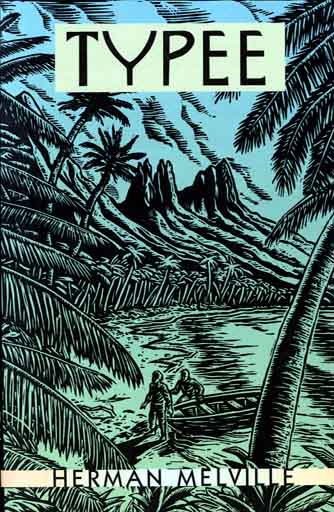 Typee is Herman Melville's first book, recounting his experiences after having jumped ship in the Marquesas Islands in 1842, and becoming a captive of a cannibal island tribe. It was an immediate success in America and England, and was Melville's most popular work during his lifetime. It was not until the end of the 1930's that it was surpassed in popularity by Moby Dick, more than thirty years after his death.
Typee is Herman Melville's first book, recounting his experiences after having jumped ship in the Marquesas Islands in 1842, and becoming a captive of a cannibal island tribe. It was an immediate success in America and England, and was Melville's most popular work during his lifetime. It was not until the end of the 1930's that it was surpassed in popularity by Moby Dick, more than thirty years after his death.The Prisoner of Zenda
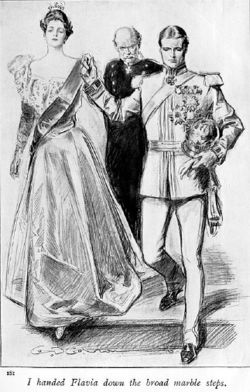 The Prisoner of Zenda, a popular adventure story published in 1894, relates the tale of Rudolf Rassendyll who has to impersonate a king, whom he happens to closely resemble, when the king is abducted by enemies on the eve of his coronation.
The Prisoner of Zenda, a popular adventure story published in 1894, relates the tale of Rudolf Rassendyll who has to impersonate a king, whom he happens to closely resemble, when the king is abducted by enemies on the eve of his coronation.Dorothy and the Wizard
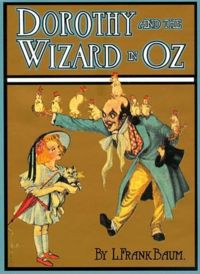 Dorothy and the Wizard in Oz is the fourth book set in the Land of Oz written by L. Frank Baum and illustrated by John R. Neill. It was published on June 18, 1908 and reunites Dorothy with the humbug Wizard from The Wonderful Wizard of Oz. This is one of only two of the original forty Oz books (the other being The Emerald City of Oz) to be illustrated with watercolor paintings.
Dorothy and the Wizard in Oz is the fourth book set in the Land of Oz written by L. Frank Baum and illustrated by John R. Neill. It was published on June 18, 1908 and reunites Dorothy with the humbug Wizard from The Wonderful Wizard of Oz. This is one of only two of the original forty Oz books (the other being The Emerald City of Oz) to be illustrated with watercolor paintings.War of the Worlds
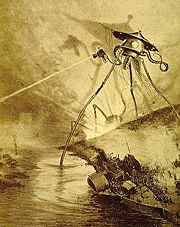 This classic early science fiction novel was written by H.G. Wells in 1898. It describes the invasion of the earth by Martians using heat rays and fighting machines. It has been adapted many times for radio and movies.
This classic early science fiction novel was written by H.G. Wells in 1898. It describes the invasion of the earth by Martians using heat rays and fighting machines. It has been adapted many times for radio and movies.Strange Case of Dr Jekyll and Mr Hyde
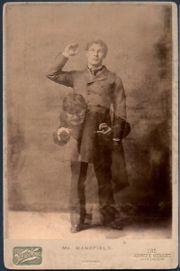 The Strange Case of Dr Jekyll1and Mr Hyde is a novella written by Robert Louis Stevenson about a lawyer, Gabriel John Utterson, who investigates the strange link between his old friend, Dr Henry Jekyll, and the misanthropic man Edward Hyde. It was first published in 1886. In his central theme of duality, "that strong sense of a man’s double being which must at times come in upon and overwhelm the mind of every thinking creature", Stevenson had been inspired by a real life figure, Deacon Brodie, a respected member of the community by day, and a burglar by night.
The Strange Case of Dr Jekyll1and Mr Hyde is a novella written by Robert Louis Stevenson about a lawyer, Gabriel John Utterson, who investigates the strange link between his old friend, Dr Henry Jekyll, and the misanthropic man Edward Hyde. It was first published in 1886. In his central theme of duality, "that strong sense of a man’s double being which must at times come in upon and overwhelm the mind of every thinking creature", Stevenson had been inspired by a real life figure, Deacon Brodie, a respected member of the community by day, and a burglar by night.Buffalo Bill
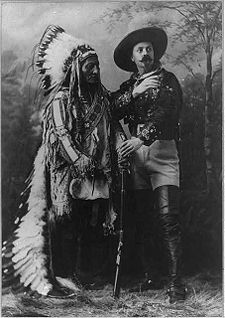 "Buffalo Bill" (1846-1917) was one of the most colorful and well known figures of the American West. He worked as a trapper, gold miner, pony express rider, stagecoach driver and soldier before he became famous for his Wild West Show. This is the story of his life in his own words.
"Buffalo Bill" (1846-1917) was one of the most colorful and well known figures of the American West. He worked as a trapper, gold miner, pony express rider, stagecoach driver and soldier before he became famous for his Wild West Show. This is the story of his life in his own words.Swiss Family Robinson
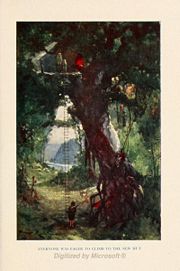 The Swiss Family Robinson is a novel, first published in 1812, about a Swiss family who are shipwrecked en route for Australia. Making for an island, they discover and develop all the necessaries for a good life - showing incredible resourcefulness in adapting and utilizing the island's many natural resources. Written by Swiss pastor Johann David Wyss, and edited by his son Johann Rudolf Wyss, it was to teach his four sons about family values, good husbandry, the uses of the natural world and self-reliance.
The Swiss Family Robinson is a novel, first published in 1812, about a Swiss family who are shipwrecked en route for Australia. Making for an island, they discover and develop all the necessaries for a good life - showing incredible resourcefulness in adapting and utilizing the island's many natural resources. Written by Swiss pastor Johann David Wyss, and edited by his son Johann Rudolf Wyss, it was to teach his four sons about family values, good husbandry, the uses of the natural world and self-reliance.The Call of the Wild
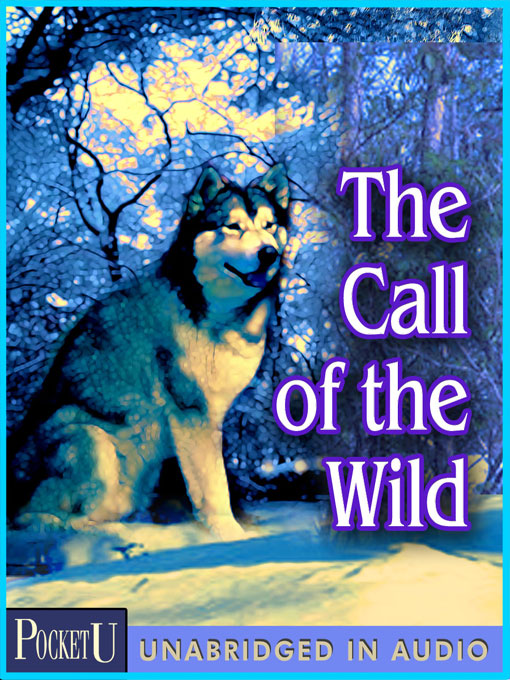 Published in 1903, The Call of the Wild is London's most familiar book and considered one of his best. Because the protagonist is a dog, it is often mistakenly thought to be particularly suitable for children. The hero, Buck, is a domestic pet who is abducted by thieves and sold to a trainer of sled dogs. In a series of episodes, Buck is forced to survive and adapt to brutal and cruel conditions.
Published in 1903, The Call of the Wild is London's most familiar book and considered one of his best. Because the protagonist is a dog, it is often mistakenly thought to be particularly suitable for children. The hero, Buck, is a domestic pet who is abducted by thieves and sold to a trainer of sled dogs. In a series of episodes, Buck is forced to survive and adapt to brutal and cruel conditions.

